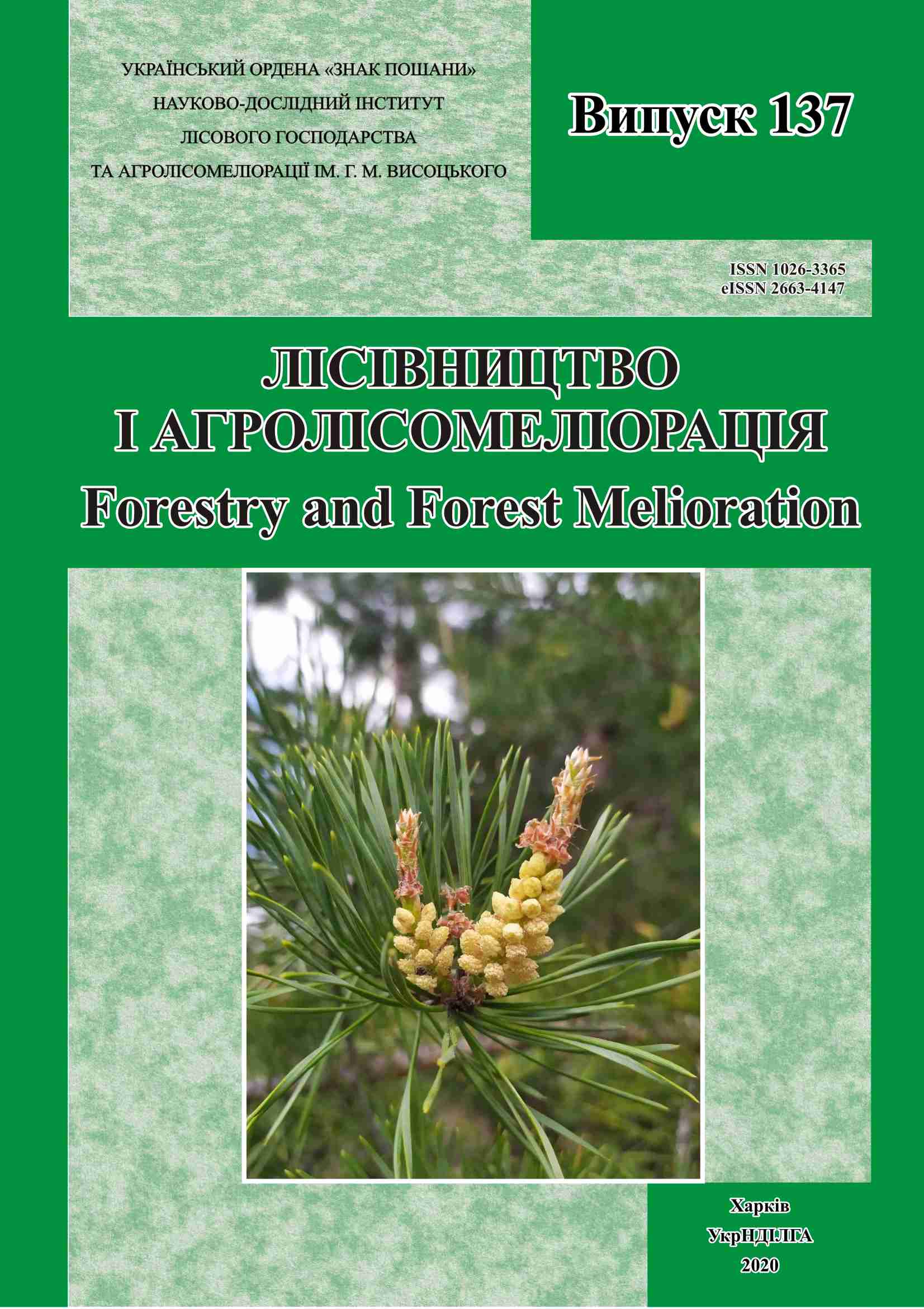Abstract
Introduction
The world community has recognized the necessity to thoroughly study forest hydrology and the interaction between forest vegetation and water. Research works confirm a vital role forests play in ensuring water distribution and water quality. Changes in ground water regime are influenced by stands, weather conditions, anthropogenic and other factors.
The study is urgent as it is necessary to specify current synergistic relationship between the dynamics of groundwater levels (GWL), meteorological factors, and pathological forest decline in the region.
The aim of the work was to study the dynamics of GWL and its relationship with meteorological conditions.
Materials and Methods
The research was carried out at the water catchment of the permanent forest study area in the Mariupol Forest Research Station in Donetsk Region, Ukraine, on five stationary boreholes from January 2000 to August 2014 and the autumn-winter period of 2020 in the stands aged 90–122 years and their edges. The surface of the study site is flat or with slight slopes. The soils are common chernozems on forest-like loams. The data of the meteorological station of Mariupol Forest Research Station were used.
Results and Conclusions
The highest GWL (2000–2014) was registered in 2005, while the lowest – in 2008–2009. There is a noticeable cyclical fluctuation of GWL and downward trends. The increase or decrease in GWL occurs the following year after an abnormally rainy or arid year.
The rise of GWL occurs gradually from February to June. During the period of active vegetation, the maximum GWL is observed, later it decreases.
In 2020, during the autumn and winter months, there was a decrease in GWL in all the boreholes. Thus, this value reached a record low level in the watershed (borehole 2 – 1,460 cm, borehole 4 – 1,390 cm). The fluctuations of GWL amplitude s increased in all sample points, the most in borehole 5 (by 300 cm).
For all of the boreholes, a weak correlation was found between the GWL by months and the precipitation at this time, and moderate one between the GWL and the precipitation in the previous month. The correlation between the average monthly values of the GWL and the precipitation was weak, for the previous month it was moderate.
The water level in the pond situated in the territory of the enterprise decreased by 1.9 m as of 2020.
Decrease of GWL has a negative impact on the forest. Oak stands decline mostly gradually, of weak and medium degrees, single and group character. In the spruce stand the decline is sharp, of a severe degree and a continuous nature. Oak trees adapt better to changes in soil moisture.
GWL was the lowest in the watershed, while it was the highest in the gully. The largest amplitude of GWL fluctuations was observed in the gully at the eastern edge of the protective forest shelterbelt; the smallest one was found at the watershed. During the growing season, GWL was maximal.
The highest GWL was in 2005, the lowest in 2020. There is a cyclical rhythm of GWL fluctuations and a downward trend. There is a strong correlation between GWL and the average long-term air temperature by months, and a moderate correlation between GWL and the precipitation in the previous year. A decrease in ground water level intensifies pathological decline of forests in the region.
14 Figs., 3 Tables, 18 Refs.
Key words: ground water level fluctuation, meteorological factors, water catchment area, forest hydrology.

This work is licensed under a Creative Commons Attribution 4.0 International License.
